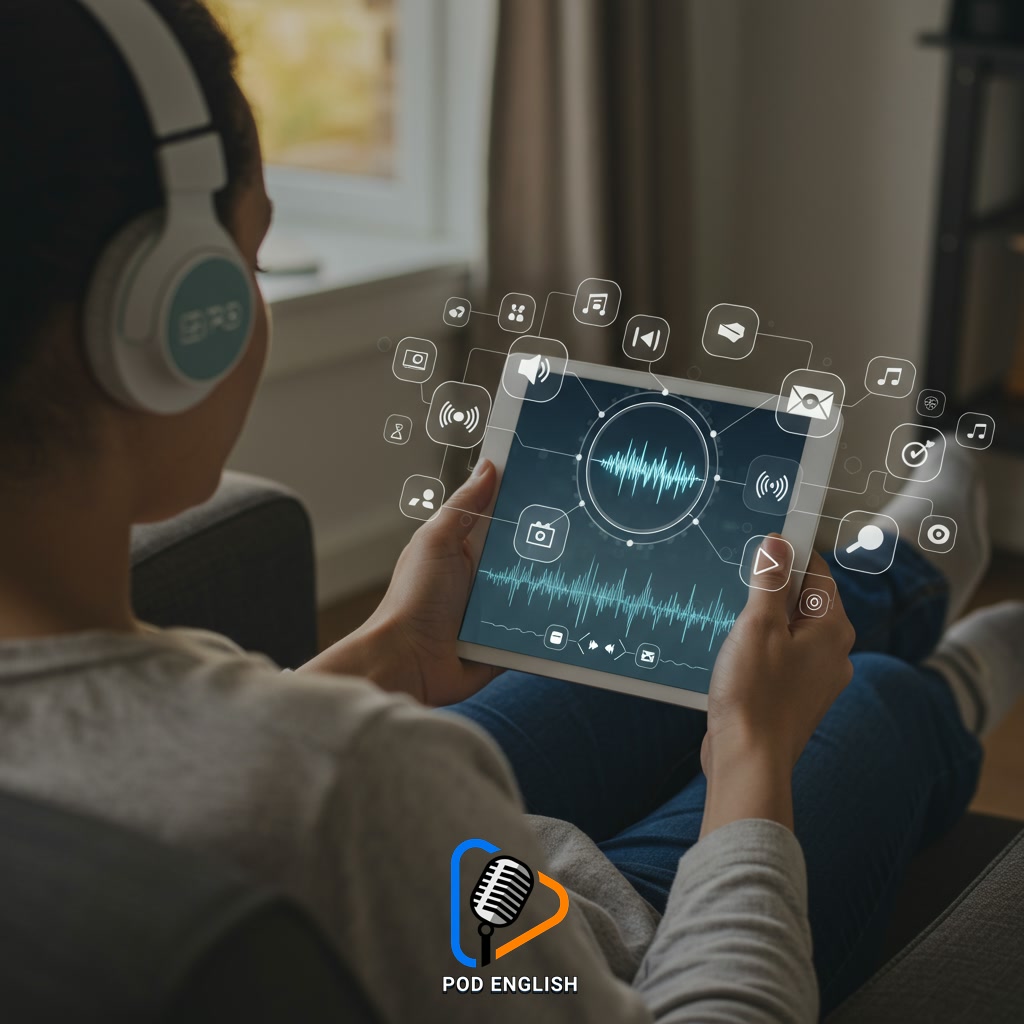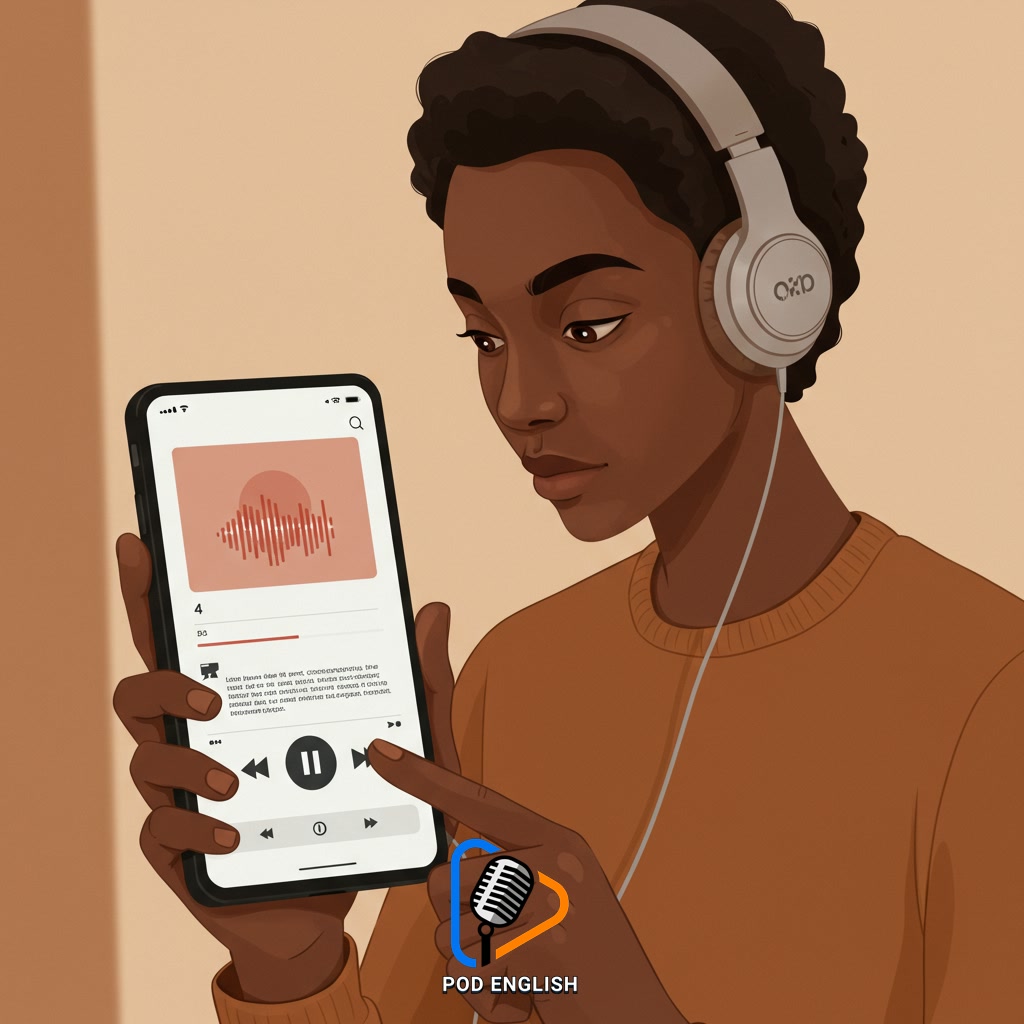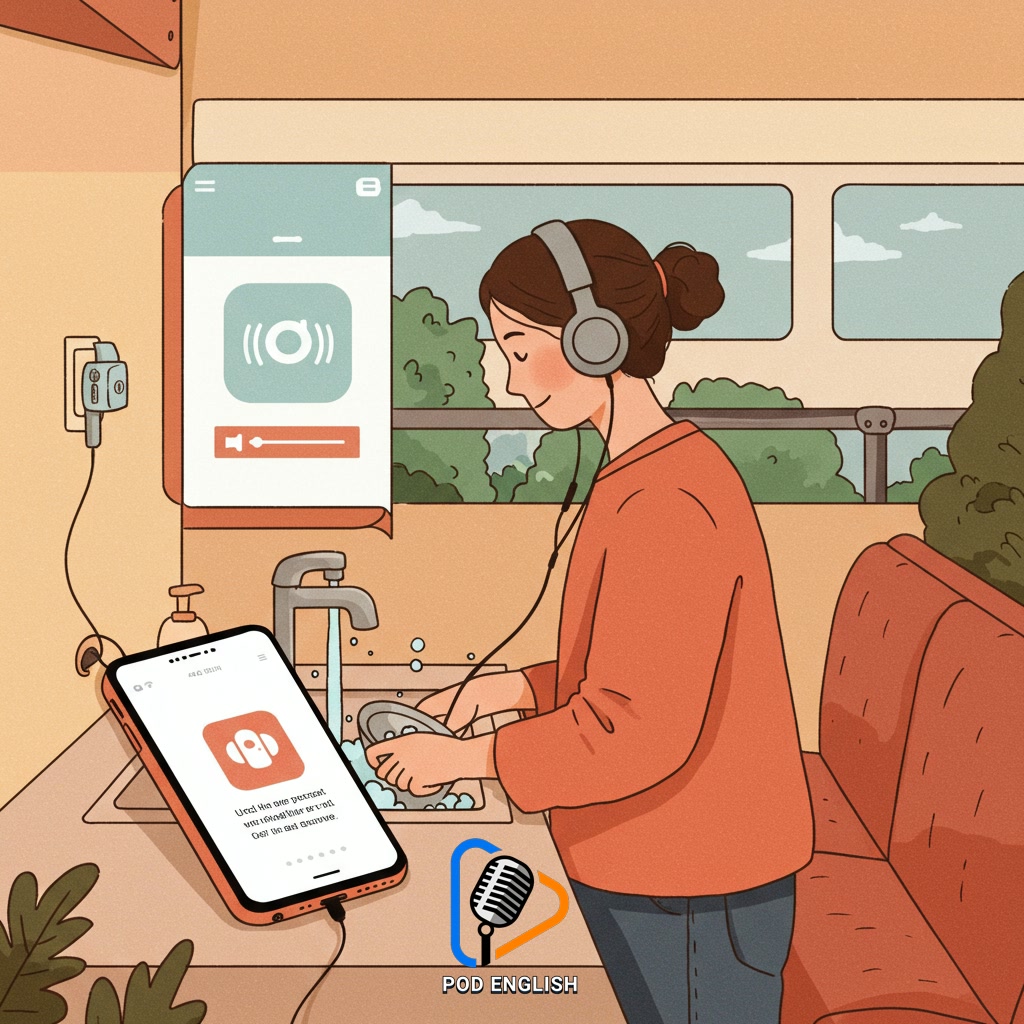Learn English
Learn English Effectively: Build Your Personalized Podcast Playlist for Better Listening

This content explores an effective strategy for learning English. It focuses specifically on enhancing listening comprehension through podcasts. The key method discussed is creating a personalized podcast playlist tailored to individual needs and interests. By curating a custom selection, learners can significantly boost their English listening skills.
Table of Contents
- Section 1: Why Podcasts Are Your Secret Weapon for English Listening
- Section 2: Finding the Right Podcasts for Your English Level and Interests
- Section 3: Curating Your Personalized English Podcast Playlist
- Section 4: Maximizing Your Learning: Active Listening Techniques with Podcasts
- Section 5: Reviewing and Evolving Your Podcast Playlist
- Section 6: Putting It All Together: Building a Consistent Listening Habit
Section 1: Why Podcasts Are Your Secret Weapon for English Listening
Podcasts offer a uniquely powerful way to boost your English listening skills, making them your secret weapon in language learning. Unlike scripted dialogues or classroom exercises, podcasts provide exposure to authentic, natural English spoken by real people in various contexts. You can find podcasts on almost any topic imaginable, from news and history to hobbies and comedy, allowing you to learn while engaging with subjects you genuinely enjoy. This variety means you’re exposed to different accents, speaking styles, and vocabulary used in everyday conversation. Furthermore, podcasts are incredibly flexible; you can listen anytime, anywhere – during your commute, workout, or chores. This consistent, convenient exposure helps train your ear to understand spoken English at a natural pace, building confidence and comprehension over time. By incorporating podcasts into your routine, you turn passive listening into an active and effective learning tool.

Why Podcasts Are Your Secret Weapon for English Listening
Section 2: Finding the Right Podcasts for Your English Level and Interests
Now that you know the power of podcasts, the next crucial step is discovering the ones that are a perfect fit for you. This means considering both your current English proficiency level and your personal interests. If you’re a beginner, look for podcasts specifically designed for English learners, often featuring slower speech, simpler vocabulary, and clear explanations. Intermediate and advanced learners can explore authentic content, but should still choose topics they genuinely enjoy, as this keeps motivation high. Think about your hobbies, your job, or subjects you’re curious about – there’s likely a podcast out there covering it! Don’t be afraid to sample different shows to find hosts whose speaking style you like and content that challenges you appropriately without being overwhelming.

Finding the Right Podcasts for Your English Level and Interests
Section 3: Curating Your Personalized English Podcast Playlist
Building your personalized English podcast playlist involves actively searching and selecting shows that align with your level and interests. Start by exploring popular podcast platforms, using keywords related to your hobbies, profession, or general topics you enjoy. Pay attention to the podcast’s description, episode length, and the host’s accent and speaking speed in a sample episode. Don’t be afraid to try a few episodes from different podcasts before adding them to your list. Consider including a mix of content: some for focused study (like grammar or vocabulary), and others for general listening practice on engaging topics. The goal is to create a collection that you are genuinely excited to listen to regularly, making the learning process enjoyable and effective.

Curating Your Personalized English Podcast Playlist
Section 4: Maximizing Your Learning: Active Listening Techniques with Podcasts
Okay, you’ve taken the crucial step of building your personalized English podcast playlist based on your level and interests. Now, to truly maximize your learning from these selections, simply listening passively isn’t enough. The key lies in active listening. This involves engaging directly with the audio content. Instead of just letting the words wash over you, focus your attention. Try to identify the main ideas being discussed, listen for specific vocabulary you want to learn, or pay close attention to pronunciation and intonation. Don’t hesitate to pause the podcast to think about what you’ve heard, try to predict what comes next, or even repeat phrases to practice speaking. By actively processing the information, you transform listening from a background activity into a powerful tool for improving your comprehension and overall English fluency.

Maximizing Your Learning: Active Listening Techniques with Podcasts
Section 5: Reviewing and Evolving Your Podcast Playlist
Okay, you’ve taken the crucial step of building your personalized English podcast playlist based on your level and interests. Now, to truly maximize your learning from these selections, simply listening isn’t enough. Your English skills will improve, and your interests might change. Therefore, it’s essential to regularly review and evolve your playlist. Set a reminder, perhaps monthly or quarterly, to check if the podcasts you’re listening to are still challenging you appropriately. Are they too easy? Too difficult? Are you still finding the topics engaging? Don’t hesitate to remove podcasts that no longer serve your learning goals or bore you. Actively search for new podcasts that align with your current level and evolving interests. This dynamic approach ensures your listening practice remains effective, enjoyable, and continuously supports your progress in English.

Reviewing and Evolving Your Podcast Playlist
Section 6: Putting It All Together: Building a Consistent Listening Habit
Okay, you’ve taken the crucial step of building your personalized English podcast playlist based on your level and interests. Now, to truly maximize your learning from these selections, simply listening occasionally isn’t enough. The key is consistency. Building a listening habit means integrating it into your daily or weekly routine in a sustainable way. Start with manageable chunks, perhaps 15-20 minutes a day, during a time you can realistically commit to, like your commute, a break, or while doing chores. Don’t pressure yourself to understand every word; focus on getting the general meaning and becoming comfortable with the speed and pronunciation. Gradually increase your listening time as you feel more confident. Making listening a regular, non-negotiable part of your schedule is how you’ll see significant progress in your English comprehension over time.

Putting It All Together: Building a Consistent Listening Habit













